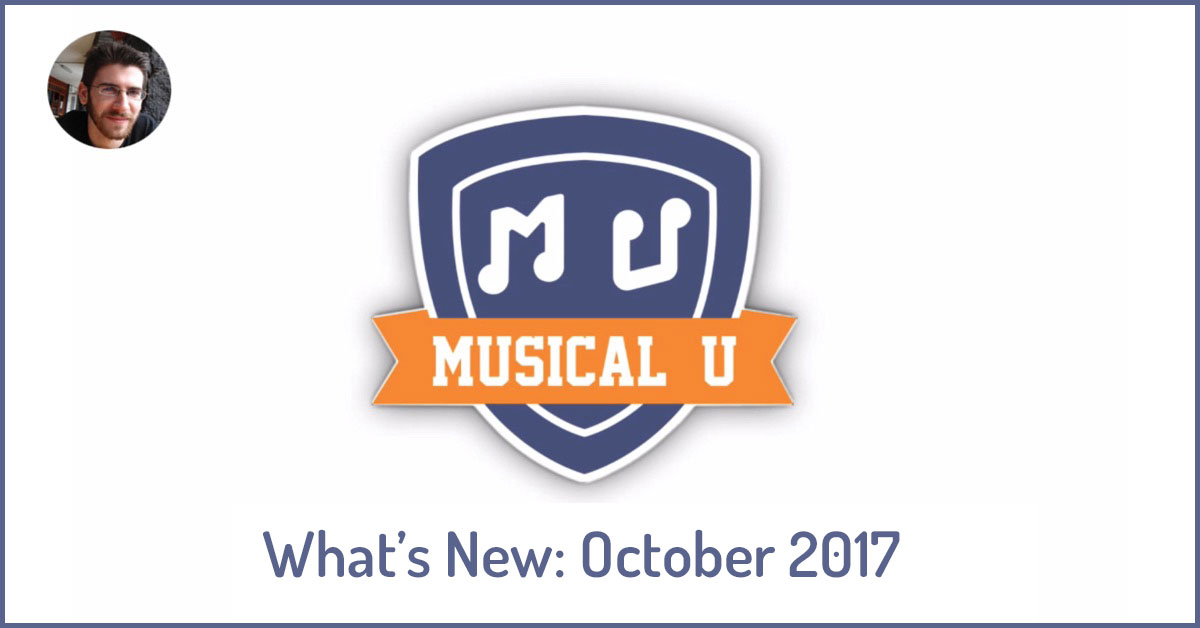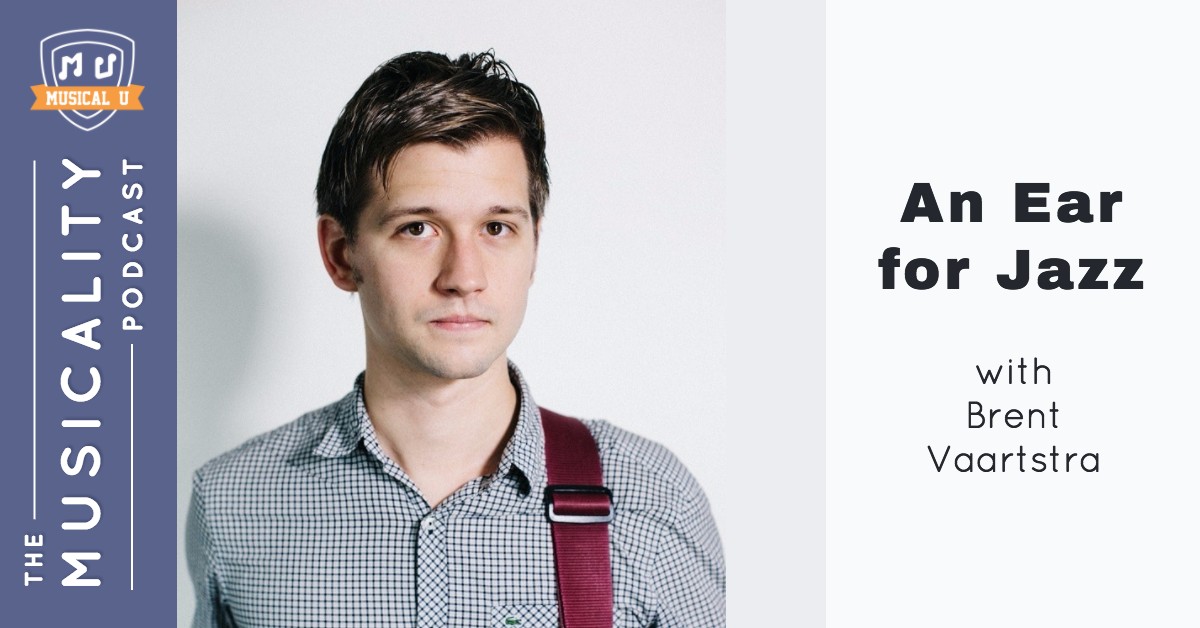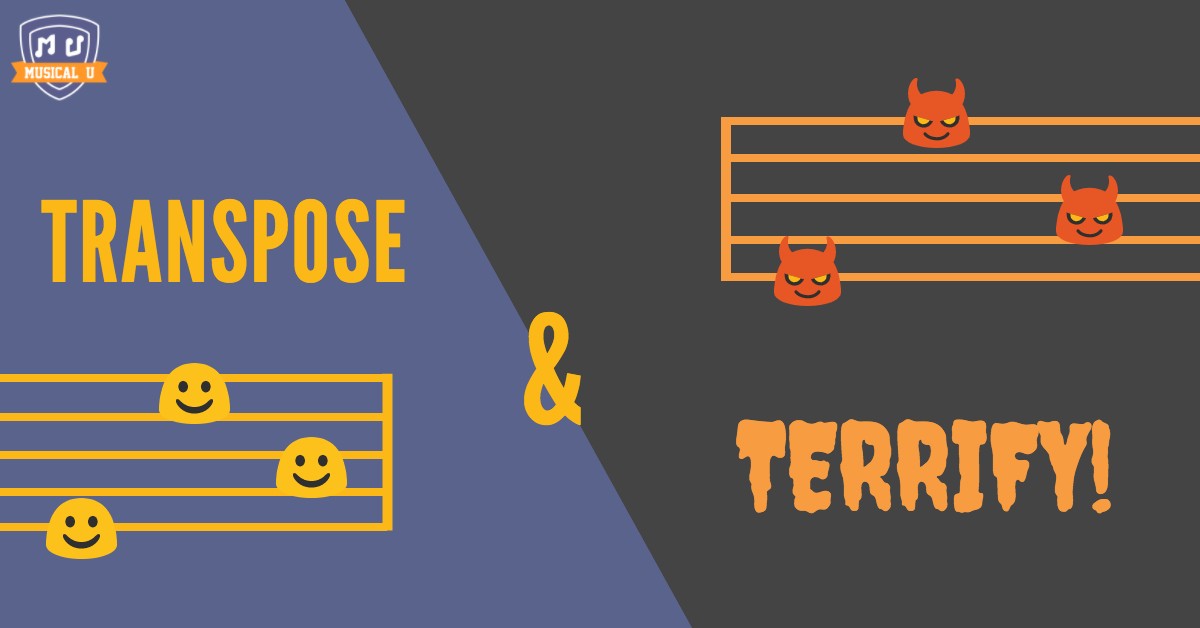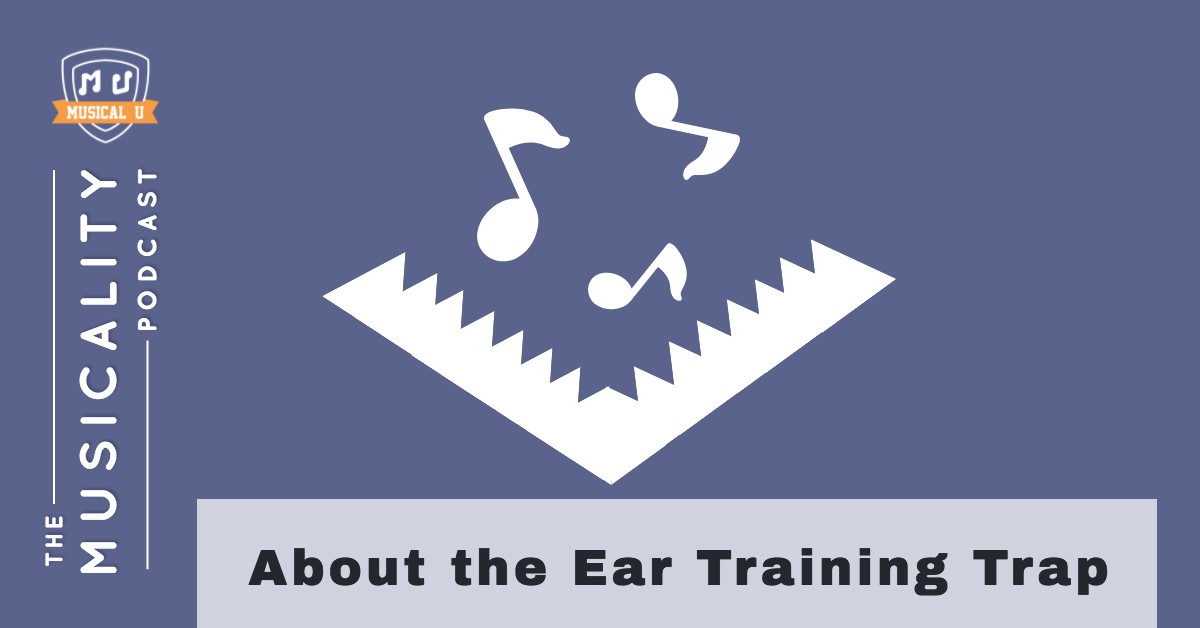As the fears gather force in anticipation of Halloween, Musical U is facing those fears, taking the mystery out of some concepts that have intimidated and frightened aspiring musicians since the dawn of time.
We deconstruct the myth that jazz is an advanced genre requiring a perfect ear and perfect chops, clue you into the secret of making music sound spooky (it’s not nearly as complicated as you think!), and guide you around that gaping, unseen hole in the ground known as the ear training trap.
But first, let’s see what we’ve added to our already-towering stack of musical resources…
October’s Offerings
It’s been a busy month here at Musical U. Besides our regularly-scheduled programming of ear training tips, podcasts, and musicality advice from the pros, October has seen the addition of three resources for you to sink your teeth into!
 First off, we’re releasing a new module to make mastering scales easier than ever. Our new Scale Degree Recognition module will enable you to identify notes of the major scale simply by singing them in solfa (a.k.a. solfege).
First off, we’re releasing a new module to make mastering scales easier than ever. Our new Scale Degree Recognition module will enable you to identify notes of the major scale simply by singing them in solfa (a.k.a. solfege).
Our Instrument Packs have been updated with a lesson in rhythmic precision, teaching you how to hone your inner metronome. Our pros for singing, guitar, bass, and piano all offered up some amazing advice (both general and instrument-specific) on how you can better feel the beat.
And last but absolutely not least, the imminent return of Halloween calls for some scary studies in spookifying your sound! This time around, our resident piano pro Sara Campbell shares the secret of turning upbeat, happy songs into something nicely suited for… a horror movie soundtrack.
Head over to What’s New in Musical U: October 2017 for more details on these new offerings!
Jazz is for Everyone
This week, we interviewed Learn Jazz Standards founder Brent Vaartstra about how the foundations of jazz can be of value to any musician, whether or not they’re interested in jazz itself.
Ear training is an invaluable skill for jazz musicians; this is the foundation of improvisation, playing and singing around the beat while still staying in time, and expressing yourself musically! These lessons benefit musicians of all backgrounds – nobody wants to play robotically.
 Brent’s website is a goldmine of resources for any kind of musician, with lessons on chord progressions, intervals, playing by ear, and more. Most importantly, he bridges the gap between learning music theory and actually applying it to your instrument.
Brent’s website is a goldmine of resources for any kind of musician, with lessons on chord progressions, intervals, playing by ear, and more. Most importantly, he bridges the gap between learning music theory and actually applying it to your instrument.
Tune into our podcast episode An Ear for Jazz, with Brent Vaartstra to learn about Brent’s musical background, what led him to start Learn Jazz Standards, his teaching philosophy for ear training, and a wonderful freebie he has kindly provided to our listeners to get started with developing their ear!
Brent has such a fascinating story about how he came to be the musician he is today. One interesting aspect was that he was forced, with the mysterious disappearance of his teacher, to begin playing by ear at a very early age. While this is not the path that many of us take, it begs the question, when is the right time to begin playing by ear? Key-notes explores this question.
While most piano players begin with learning by sheet music, guitar players tend to pick up sheet music later. But, what if piano players started the same way that guitar players do? Piano Picnic explains how pianists could benefit from starting without sheet music.
Jazz players often think of music in terms of the chord changes that the chart is built around. This requires an additional step in the ear training process to be able to recognize the chords and anticipate where the music is heading. Jazz Advice has a great guide on anticipating chord transitions!
Jazz is one of the most aurally intensive forms of popular music, in regards to the amount of listening that musicians in this genre tend to do. Today’s jazz musician still looks to the many classics like Miles Davis, The Dave Brubeck Quartet, and Charlie Parker.
But does that mean that good jazz hasn’t been made since back in the day? Absolutely not! Brent Vaartstra compiled this list of 92 modern jazz albums on his blog for you to expand your repertoire.
Spookify Your Songs!
 What gives horror movie soundtracks their visceral, hair-raising effect? Why are some melodies so unsettling to the ear? How do different chords and chord progressions lend completely different character to songs?
What gives horror movie soundtracks their visceral, hair-raising effect? Why are some melodies so unsettling to the ear? How do different chords and chord progressions lend completely different character to songs?
The answers to these questions are complex, but can be be boiled down to one thing: transposition.
Musical U’s resident piano pro Sara Campbell works her magic on nursery rhymes and other simple, innocent happy notes, and shows how changing just a fewl notes can transforms the song from upbeat and cheery to creepy and foreboding.
Throw your own malicious mix into Sara’s cauldron as you learn to Transpose and Terrify!
Transposition is certainly a valuable skill that any musician will benefit from mastering. For our guitar players, Guitar Trance details how to easily transpose in only four steps.
Transposing into a minor key is just one way that you can make music sound scarier and fit in with your Halloween adventures. Beyond minor, there are many other elements in music that help to create scary music. 12tone shows you the key components of scary music and how you can create your own!
Aside from these types of special effects, there is an interval that is traditionally labeled as the “Devil’s Interval”: the dreaded tri-tone. The tri-tone is a perfect fourth interval, raised by a half step. This essentially splits the diatonic scale in half, creating a sound that you will never forget! Learn more about this staple in horror music from the Sync Project.
During the course of this mini-lesson, three distinctly different minor scales were discussed, which can all be used to make your music more Halloween-y. Rich from Trumpet Planet explores the different types of minor scales, and the key characteristics of each one.
Escaping the Trap
The ear training journey is not without some speed bumps and roadblocks along the way.
 It’s easy to do the exercises, but some musicians find themselves in a rut when it comes time to play. Let’s say a guitarist can recognize intervals by ear with no problems, but has a hard time strumming out a perfect fifth when they pick up their instrument.
It’s easy to do the exercises, but some musicians find themselves in a rut when it comes time to play. Let’s say a guitarist can recognize intervals by ear with no problems, but has a hard time strumming out a perfect fifth when they pick up their instrument.
What’s going on?
Check out About the Ear Training Trap to learn how Musical U can help you avoid this pitfall, and how to best combine ear training and instrumental practice to get the results you want.
Taking all that you are learning in your musical studies -whether it be aural training, music theory, or other bits of instruction – and applying it to your music makingis the missing element to achieving the musical freedom that you are seeking. For another look at this, Todd from Liquidrum describes the importance of learning your instrument and not just your pieces.
There was a fascinating moment in the interview where Brent discussed that the greatest musicians are not just “playing an instrument”, but that the instrument is a vessel for their musical expression. This is particularly enlightening (and inspiring!), and a big reason that we stress singing so much within Musical U. Jay Friedman, principal trombonist for the Chicago Symphony Orchestra, has a very similar philosophy.
Singing is a such an important part of ear training, even though most of us are not singers! Don’t be frightened!ou don’t have to be a vocalist to be able to sing through your intervals. If you are uncomfortable with letting your voice free, it will be helpful to start out with some exercises that have reference pitches for you to build on. Let Verba Voice Technique help you on your way:
Apart from applying ear training exercises directly to your instrument, you could take another approach and incorporate the music you are trying to learn. By taking one song, and using sight singing, you willmake great progress in applying your newfound ear training success to real music. The process is really quite simple, as laid out by the School of Popular Music.
Still scared of the dark?
Even with a lantern in hand, the dark places won’t light up until we step inside.
So now that we’ve shone the light on jazz music, transposition, and ear training, step inside without fear – you’ll find treasures you didn’t even know existed.
The post October’s Offerings, Jazz is for Everyone, Spookify Your Songs, and Escaping the Trap appeared first on Musical U.